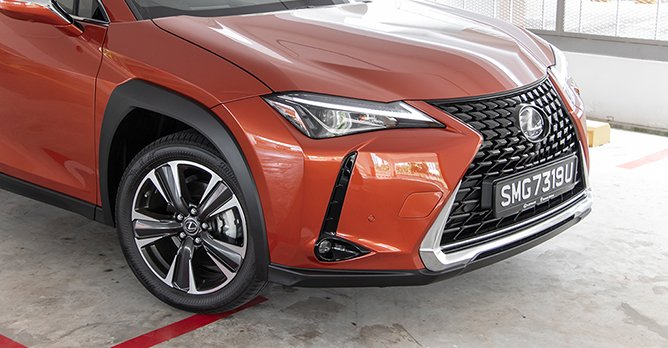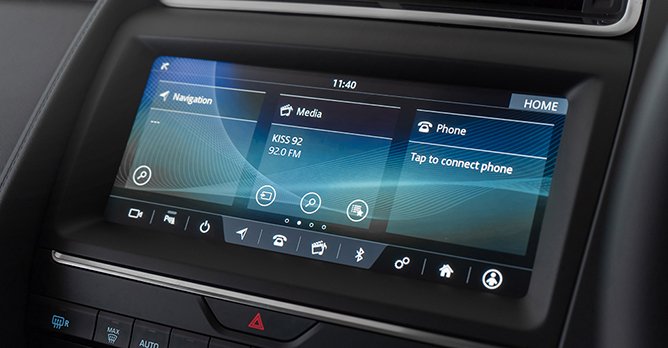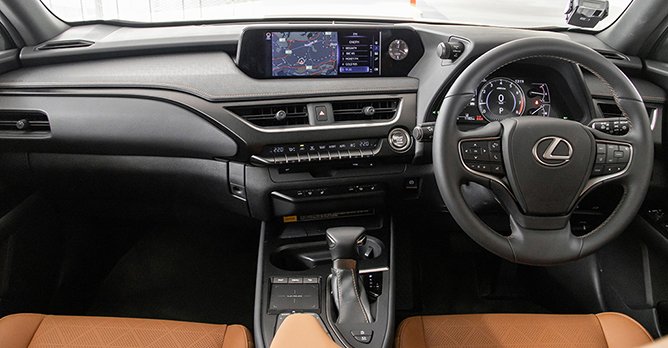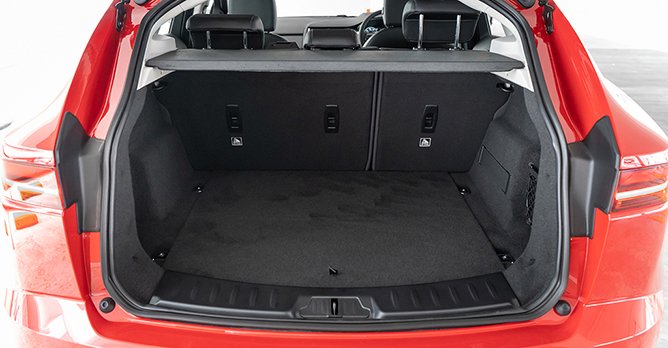Jaguar E-PACE 2.0 S (200PS) vs Lexus UX 2.0 Luxury
17 Jun 2019|24,040 views
Jaguar E-Pace
More spacious cabin and boot
Infotainment interface much easier to use
Torquey turbocharged 2.0-litre engine
Lexus UX
Sleek and stylish exterior design
Cabin feels more premium and luxurious
Agile and light on its feet
With the thriving popularity of compact SUV, it's unsurprising that car manufacturers are consistently pushing out models in this segment to satiate customer demand. It makes economic sense, then, to position such compact SUV offerings as an entry point into a brand (especially in the case of a luxury carmaker).
For Lexus, its the new UX offering that sits at the entry point into Japanese luxury. Similarly, Jaguar is now offering its E-PACE compact SUV with a 197bhp 2.0-litre engine, making this particular variant the cheapest Jag you can buy.
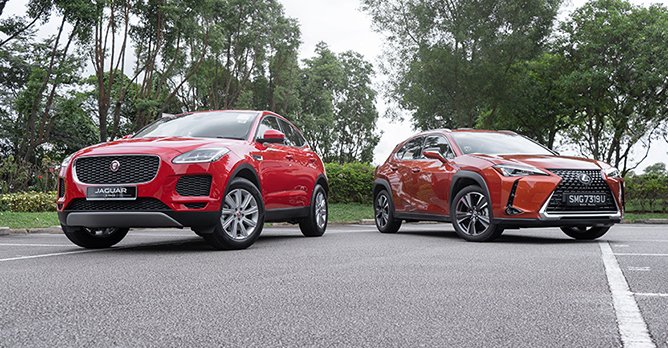
 The Jaguar E-PACE and Lexus UX are the cheapest models you can buy from the respective luxury brands
The Jaguar E-PACE and Lexus UX are the cheapest models you can buy from the respective luxury brands
So, if you are in the market for a new luxury compact SUV that costs roughly $180,000, which one should you choose?
Different looks
Visually, the cars are rather different. The Lexus has a smaller overall silhouette, rides lower, and its sharp lines lend it a sleek and flowing design language.
Overall, the UX is a whole 100mm longer than E-PACE, but the E-PACE is wider and taller. As a result, it comes across as beefier and more muscular. The E-PACE also rides on much thicker tyres (though both cars have 18-inch rims), has an imposing front end, and cuts a much more aggressive figure.
Keen to function
In the Lexus, you can definitely feel an air of luxury. Materials are soft to the touch, and you can detect the precision and attention to detail given to putting parts together.
That said, the car isn't without its compromises. The infotainment system still require some time to get used to. Yes, the quick access buttons on the centre console make things slightly less obtuse to navigate, but the system still feels dated. Menus are somewhat frustrating to navigate, especially if you aren't familiar with the touchpad. Also, there really are quite a lot of buttons everywhere.
In the Jag, life is much simpler. System functions are accessed via a touchscreen, the controls are largely consolidated on the centre console, and overall there's a notable ease of use that the Lexus lacks. If you are the sort of driver that regularly needs to toggle between functions such as navigation, radio or your phone's music library, the Jaguar definitely delivers a much more accessible and fuss-free experience.
The downside is that the Jag doesn't feel anywhere as luxurious as the Lexus. For example, the cabin features more plastics, and the buttons don't have the same tactile feel compared to the Lexus.
As far as practicality is concerned, the E-PACE certainly trumps the UX. The UX's 272-litre boot pales in comparison to the E-PACE's 484 litres, and the E-PACE also has a tad more room for rear passengers (it's wheelbase is 41mm longer).
For Lexus, its the new UX offering that sits at the entry point into Japanese luxury. Similarly, Jaguar is now offering its E-PACE compact SUV with a 197bhp 2.0-litre engine, making this particular variant the cheapest Jag you can buy.

So, if you are in the market for a new luxury compact SUV that costs roughly $180,000, which one should you choose?
Different looks
Visually, the cars are rather different. The Lexus has a smaller overall silhouette, rides lower, and its sharp lines lend it a sleek and flowing design language.
Overall, the UX is a whole 100mm longer than E-PACE, but the E-PACE is wider and taller. As a result, it comes across as beefier and more muscular. The E-PACE also rides on much thicker tyres (though both cars have 18-inch rims), has an imposing front end, and cuts a much more aggressive figure.
Keen to function
In the Lexus, you can definitely feel an air of luxury. Materials are soft to the touch, and you can detect the precision and attention to detail given to putting parts together.
That said, the car isn't without its compromises. The infotainment system still require some time to get used to. Yes, the quick access buttons on the centre console make things slightly less obtuse to navigate, but the system still feels dated. Menus are somewhat frustrating to navigate, especially if you aren't familiar with the touchpad. Also, there really are quite a lot of buttons everywhere.
In the Jag, life is much simpler. System functions are accessed via a touchscreen, the controls are largely consolidated on the centre console, and overall there's a notable ease of use that the Lexus lacks. If you are the sort of driver that regularly needs to toggle between functions such as navigation, radio or your phone's music library, the Jaguar definitely delivers a much more accessible and fuss-free experience.
The downside is that the Jag doesn't feel anywhere as luxurious as the Lexus. For example, the cabin features more plastics, and the buttons don't have the same tactile feel compared to the Lexus.
As far as practicality is concerned, the E-PACE certainly trumps the UX. The UX's 272-litre boot pales in comparison to the E-PACE's 484 litres, and the E-PACE also has a tad more room for rear passengers (it's wheelbase is 41mm longer).
Grunt or fun
On the road, the differences are also quite stark. The Lexus feels small, more hatchback than SUV. The seating position is notably lower than in the E-PACE, and through corners the car with fairly agile, with body roll kept well in check.
The engine isn't particularly powerful (it's a naturally aspirated 2.0-litre unit with 170bhp and 204Nm of torque), but power is delivered in creamy smooth manner. On the go, it's a spirited little car. The steering is light and smooth, and the ride is supple and forgiving.
The E-PACE is a much heftier proposition, and you can immediately feel the 347kg weight disparity. Around corners, the E-PACE certainly rolls more, and you feel like you're exerting more energy when turning the steering wheel. Also, the high ride height means that the car is notably bouncier over imperfect roads than the UX.
To offset the additional weight, the E-PACE packs more power than the UX. Granted, this particular engine is in a lower state of tune, but the turbocharged 2.0-litre engine still packs a healthy 197bhp and 320Nm of torque. The additional grunt provided by the turbocharger pushes the car along easily, and as a result the E-PACE is a whole second quicker to 100km/h than the UX.
To each its own
On paper, the Lexus UX and Jaguar E-PACE may seem quite similar - both have 2.0-litre engines with under 200bhp, and are priced just over $6,000 apart. So if you are shopping for a compact SUV at the $180,000 price point, these options should be well in your sights.
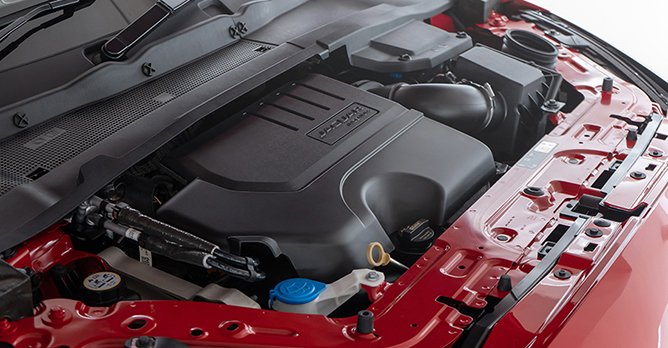
 The turbocharged 2.0-litre engine in the E-PACE delivers much more grunt, helping to overcome the car's weight disparity
The turbocharged 2.0-litre engine in the E-PACE delivers much more grunt, helping to overcome the car's weight disparity
In reality, they offer two distinctly different propositions that will appeal to different buyers. If space, practicality and ease of use are of prime concern, the E-PACE is a no brainer. Buyers who want a car that feels imposing and have a high driving position will certainly be drawn to the E-PACE.
The UX on the other hand is sweeter to drive, demonstrates greater refinement, and feels more luxurious. It definitely feels smaller, but at the same time it's the car with greater personality and emotional appeal.
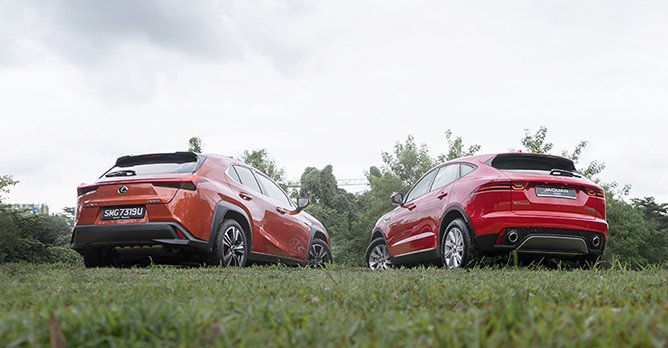
 The E-PACE and UX offers two quite different answers to the question of what you really want out of a compact SUV
The E-PACE and UX offers two quite different answers to the question of what you really want out of a compact SUV
Despite its imperfections, the Lexus UX is probably the more desirable car. However, it really comes down to a question of what you need. If it's a car for one, the Lexus edges it. But if your family has any say in the matter, we're pretty sure you'll be buying the E-PACE instead.
On the road, the differences are also quite stark. The Lexus feels small, more hatchback than SUV. The seating position is notably lower than in the E-PACE, and through corners the car with fairly agile, with body roll kept well in check.
The engine isn't particularly powerful (it's a naturally aspirated 2.0-litre unit with 170bhp and 204Nm of torque), but power is delivered in creamy smooth manner. On the go, it's a spirited little car. The steering is light and smooth, and the ride is supple and forgiving.
The E-PACE is a much heftier proposition, and you can immediately feel the 347kg weight disparity. Around corners, the E-PACE certainly rolls more, and you feel like you're exerting more energy when turning the steering wheel. Also, the high ride height means that the car is notably bouncier over imperfect roads than the UX.
To offset the additional weight, the E-PACE packs more power than the UX. Granted, this particular engine is in a lower state of tune, but the turbocharged 2.0-litre engine still packs a healthy 197bhp and 320Nm of torque. The additional grunt provided by the turbocharger pushes the car along easily, and as a result the E-PACE is a whole second quicker to 100km/h than the UX.
To each its own
On paper, the Lexus UX and Jaguar E-PACE may seem quite similar - both have 2.0-litre engines with under 200bhp, and are priced just over $6,000 apart. So if you are shopping for a compact SUV at the $180,000 price point, these options should be well in your sights.

In reality, they offer two distinctly different propositions that will appeal to different buyers. If space, practicality and ease of use are of prime concern, the E-PACE is a no brainer. Buyers who want a car that feels imposing and have a high driving position will certainly be drawn to the E-PACE.
The UX on the other hand is sweeter to drive, demonstrates greater refinement, and feels more luxurious. It definitely feels smaller, but at the same time it's the car with greater personality and emotional appeal.

Despite its imperfections, the Lexus UX is probably the more desirable car. However, it really comes down to a question of what you need. If it's a car for one, the Lexus edges it. But if your family has any say in the matter, we're pretty sure you'll be buying the E-PACE instead.
Jaguar E-Pace
More spacious cabin and boot
Infotainment interface much easier to use
Torquey turbocharged 2.0-litre engine
Lexus UX
Sleek and stylish exterior design
Cabin feels more premium and luxurious
Agile and light on its feet
With the thriving popularity of compact SUV, it's unsurprising that car manufacturers are consistently pushing out models in this segment to satiate customer demand. It makes economic sense, then, to position such compact SUV offerings as an entry point into a brand (especially in the case of a luxury carmaker).
For Lexus, its the new UX offering that sits at the entry point into Japanese luxury. Similarly, Jaguar is now offering its E-PACE compact SUV with a 197bhp 2.0-litre engine, making this particular variant the cheapest Jag you can buy.

 The Jaguar E-PACE and Lexus UX are the cheapest models you can buy from the respective luxury brandsSo, if you are in the market for a new luxury compact SUV that costs roughly $180,000, which one should you choose?
The Jaguar E-PACE and Lexus UX are the cheapest models you can buy from the respective luxury brandsSo, if you are in the market for a new luxury compact SUV that costs roughly $180,000, which one should you choose?
Different looks
Visually, the cars are rather different. The Lexus has a smaller overall silhouette, rides lower, and its sharp lines lend it a sleek and flowing design language.
Overall, the UX is a whole 100mm longer than E-PACE, but the E-PACE is wider and taller. As a result, it comes across as beefier and more muscular. The E-PACE also rides on much thicker tyres (though both cars have 18-inch rims), has an imposing front end, and cuts a much more aggressive figure.
Keen to function
In the Lexus, you can definitely feel an air of luxury. Materials are soft to the touch, and you can detect the precision and attention to detail given to putting parts together.
That said, the car isn't without its compromises. The infotainment system still require some time to get used to. Yes, the quick access buttons on the centre console make things slightly less obtuse to navigate, but the system still feels dated. Menus are somewhat frustrating to navigate, especially if you aren't familiar with the touchpad. Also, there really are quite a lot of buttons everywhere.
In the Jag, life is much simpler. System functions are accessed via a touchscreen, the controls are largely consolidated on the centre console, and overall there's a notable ease of use that the Lexus lacks. If you are the sort of driver that regularly needs to toggle between functions such as navigation, radio or your phone's music library, the Jaguar definitely delivers a much more accessible and fuss-free experience.
The downside is that the Jag doesn't feel anywhere as luxurious as the Lexus. For example, the cabin features more plastics, and the buttons don't have the same tactile feel compared to the Lexus.
As far as practicality is concerned, the E-PACE certainly trumps the UX. The UX's 272-litre boot pales in comparison to the E-PACE's 484 litres, and the E-PACE also has a tad more room for rear passengers (it's wheelbase is 41mm longer).
For Lexus, its the new UX offering that sits at the entry point into Japanese luxury. Similarly, Jaguar is now offering its E-PACE compact SUV with a 197bhp 2.0-litre engine, making this particular variant the cheapest Jag you can buy.

Different looks
Visually, the cars are rather different. The Lexus has a smaller overall silhouette, rides lower, and its sharp lines lend it a sleek and flowing design language.
Overall, the UX is a whole 100mm longer than E-PACE, but the E-PACE is wider and taller. As a result, it comes across as beefier and more muscular. The E-PACE also rides on much thicker tyres (though both cars have 18-inch rims), has an imposing front end, and cuts a much more aggressive figure.
Keen to function
In the Lexus, you can definitely feel an air of luxury. Materials are soft to the touch, and you can detect the precision and attention to detail given to putting parts together.
That said, the car isn't without its compromises. The infotainment system still require some time to get used to. Yes, the quick access buttons on the centre console make things slightly less obtuse to navigate, but the system still feels dated. Menus are somewhat frustrating to navigate, especially if you aren't familiar with the touchpad. Also, there really are quite a lot of buttons everywhere.
In the Jag, life is much simpler. System functions are accessed via a touchscreen, the controls are largely consolidated on the centre console, and overall there's a notable ease of use that the Lexus lacks. If you are the sort of driver that regularly needs to toggle between functions such as navigation, radio or your phone's music library, the Jaguar definitely delivers a much more accessible and fuss-free experience.
The downside is that the Jag doesn't feel anywhere as luxurious as the Lexus. For example, the cabin features more plastics, and the buttons don't have the same tactile feel compared to the Lexus.
As far as practicality is concerned, the E-PACE certainly trumps the UX. The UX's 272-litre boot pales in comparison to the E-PACE's 484 litres, and the E-PACE also has a tad more room for rear passengers (it's wheelbase is 41mm longer).
Grunt or fun
On the road, the differences are also quite stark. The Lexus feels small, more hatchback than SUV. The seating position is notably lower than in the E-PACE, and through corners the car with fairly agile, with body roll kept well in check.
The engine isn't particularly powerful (it's a naturally aspirated 2.0-litre unit with 170bhp and 204Nm of torque), but power is delivered in creamy smooth manner. On the go, it's a spirited little car. The steering is light and smooth, and the ride is supple and forgiving.
The E-PACE is a much heftier proposition, and you can immediately feel the 347kg weight disparity. Around corners, the E-PACE certainly rolls more, and you feel like you're exerting more energy when turning the steering wheel. Also, the high ride height means that the car is notably bouncier over imperfect roads than the UX.
To offset the additional weight, the E-PACE packs more power than the UX. Granted, this particular engine is in a lower state of tune, but the turbocharged 2.0-litre engine still packs a healthy 197bhp and 320Nm of torque. The additional grunt provided by the turbocharger pushes the car along easily, and as a result the E-PACE is a whole second quicker to 100km/h than the UX.
To each its own
On paper, the Lexus UX and Jaguar E-PACE may seem quite similar - both have 2.0-litre engines with under 200bhp, and are priced just over $6,000 apart. So if you are shopping for a compact SUV at the $180,000 price point, these options should be well in your sights.

 The turbocharged 2.0-litre engine in the E-PACE delivers much more grunt, helping to overcome the car's weight disparityIn reality, they offer two distinctly different propositions that will appeal to different buyers. If space, practicality and ease of use are of prime concern, the E-PACE is a no brainer. Buyers who want a car that feels imposing and have a high driving position will certainly be drawn to the E-PACE.
The turbocharged 2.0-litre engine in the E-PACE delivers much more grunt, helping to overcome the car's weight disparityIn reality, they offer two distinctly different propositions that will appeal to different buyers. If space, practicality and ease of use are of prime concern, the E-PACE is a no brainer. Buyers who want a car that feels imposing and have a high driving position will certainly be drawn to the E-PACE.
The UX on the other hand is sweeter to drive, demonstrates greater refinement, and feels more luxurious. It definitely feels smaller, but at the same time it's the car with greater personality and emotional appeal.
Despite its imperfections, the Lexus UX is probably the more desirable car. However, it really comes down to a question of what you need. If it's a car for one, the Lexus edges it. But if your family has any say in the matter, we're pretty sure you'll be buying the E-PACE instead.
On the road, the differences are also quite stark. The Lexus feels small, more hatchback than SUV. The seating position is notably lower than in the E-PACE, and through corners the car with fairly agile, with body roll kept well in check.
The engine isn't particularly powerful (it's a naturally aspirated 2.0-litre unit with 170bhp and 204Nm of torque), but power is delivered in creamy smooth manner. On the go, it's a spirited little car. The steering is light and smooth, and the ride is supple and forgiving.
The E-PACE is a much heftier proposition, and you can immediately feel the 347kg weight disparity. Around corners, the E-PACE certainly rolls more, and you feel like you're exerting more energy when turning the steering wheel. Also, the high ride height means that the car is notably bouncier over imperfect roads than the UX.
To offset the additional weight, the E-PACE packs more power than the UX. Granted, this particular engine is in a lower state of tune, but the turbocharged 2.0-litre engine still packs a healthy 197bhp and 320Nm of torque. The additional grunt provided by the turbocharger pushes the car along easily, and as a result the E-PACE is a whole second quicker to 100km/h than the UX.
To each its own
On paper, the Lexus UX and Jaguar E-PACE may seem quite similar - both have 2.0-litre engines with under 200bhp, and are priced just over $6,000 apart. So if you are shopping for a compact SUV at the $180,000 price point, these options should be well in your sights.

The UX on the other hand is sweeter to drive, demonstrates greater refinement, and feels more luxurious. It definitely feels smaller, but at the same time it's the car with greater personality and emotional appeal.
Despite its imperfections, the Lexus UX is probably the more desirable car. However, it really comes down to a question of what you need. If it's a car for one, the Lexus edges it. But if your family has any say in the matter, we're pretty sure you'll be buying the E-PACE instead.
Car Information
Jaguar E-PACE 2.0 S [200PS] (A)
CAT B|Petrol|11.5km/L
Horsepower
147kW (197 bhp)
Torque
320 Nm
Acceleration
8.2sec (0-100km /hr)
This model is no longer being sold by local distributor
All Used Jaguar E-PACELexus UX 200 2.0 Luxury (A)
CAT B|Petrol|17.2km/L
Horsepower
127kW (170 bhp)
Torque
204 Nm
Acceleration
9.2sec (0-100km /hr)
This model is no longer being sold by local distributor
All Used Lexus UX 200Thank You For Your Subscription.










































